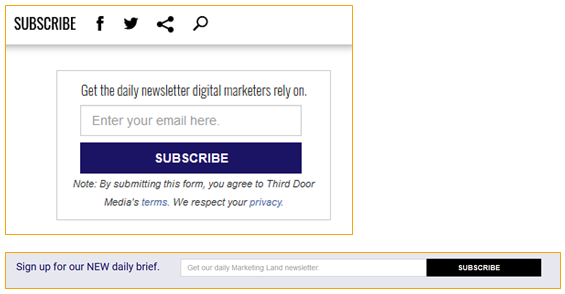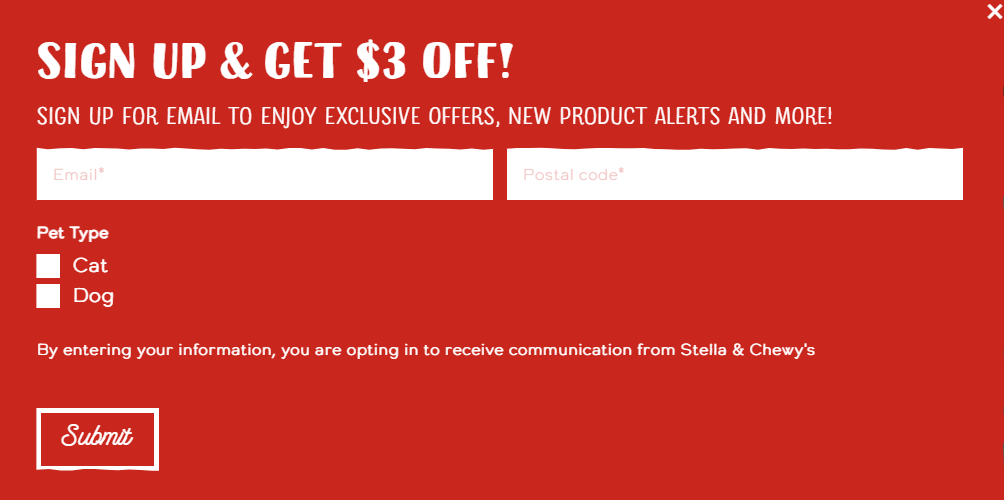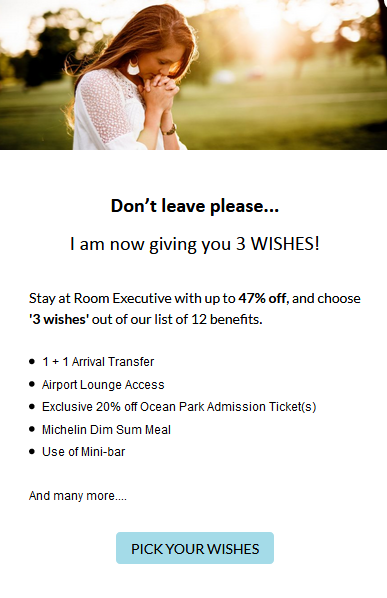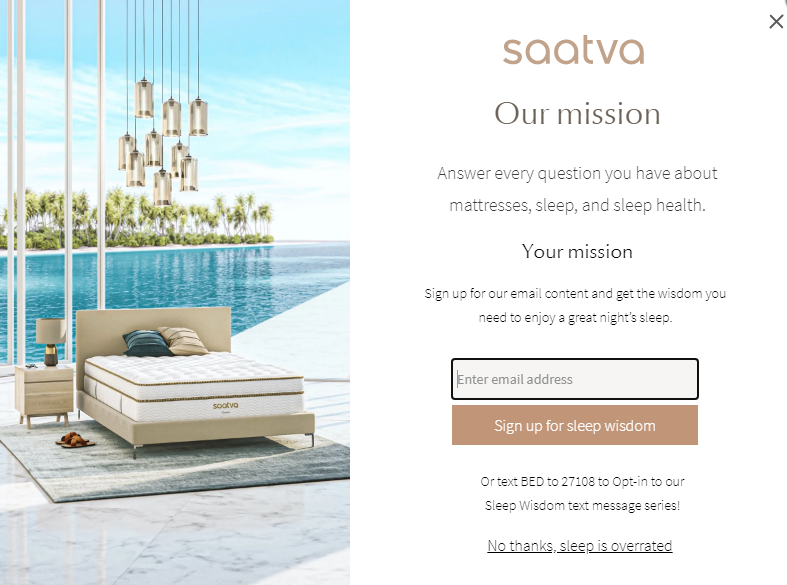Create a high-quality email marketing list and then grow your subscribers.

An email campaign’s success starts with the quality of the mailing list
If you could choose, would you rather have (1) a ton of email subscribers that rarely open your emails or (2) a handful of subscribers that actually read your messages and take action?
You’ll probably choose the 2nd group of subscribers, right? And for good reason: The reality is you need an engaged audience for your emails to perform well.
That’s why when it comes to building an email list, it’s always better to focus on quality over quantity—your email marketing campaign’s success depends on it.
So how do you create a high-quality email marketing list? Let’s find out!
By the way, if you’re still unsure about whether the juice is worth the squeeze, that is if email marketing is worth all the effort that goes into creating your first campaign, then you might first want to read why newsletters are a budget-friendly way to grow sales and all the reasons to start an email list today.
How to build an email list properly—and for free!
Email list building can be pretty daunting when you’re just getting started, especially if you’re a solopreneur or small business with limited resources.
Where do you begin, how much time will it take, and what’s it going to cost you? Also, how do you even convince people to sign up for your marketing messages?
Let’s simplify it with this step-by-step guide on how to create an email list for business.
Step 1: Find the right email marketing service provider
Before you start collecting email addresses, your first step should be to choose an email marketing service provider. You will want to consider several factors like:
- Price – how much do their plans cost and what are the limitations?
- Ease of use – do you they offer customizable templates or will you need to design your own?
- Segmentation – can you organize subscribers according to interests, demographics, product use, geography, etc.?
- Third-party integration – is it possible to connect to other services like Salesforce, WooCommerce or Magento?
- Automation – can the provider offer date- and behaviour-based; transactional; or even RSS-to-email automation?
The provider you choose will depend on what matters most to you and what you might need in the long run. Make sure you evaluate all your options, so you can be confident about your choice. It’ll be stressful to switch once you’ve started using one.
Here are some of the most popular providers and their starting prices as of 2021:
- Mailchimp: $0/month based on 2,000 contacts
- Sendinblue: $0/month, unlimited contacts, up to 300 emails per day
- Benchmarkemail: $0/month, up to 250 emails per month
- Constant Contact: Starting at $20/month for up to 500 contacts
- Mailerlite: $0/month for up to 1,000 contacts, send 12,000 emails per month
- Moosend: $0/month for up to 1,000 contacts, unlimited emails per month
- GetResponse: $12.30/month for up to 1,000 contacts, unlimited emails per month
Luckily, you can get started for free with most providers and then simply level up when you need to!
Step 2: Come up with a great offer
Real talk: the main reason people sign up for marketing emails is because they’re going to get something valuable in return. For example: important updates, discounts, priority access to special offers, or some other useful freebie.
To develop an irresistible offer, think about what your customers (or readers) would want and then craft an incentive that relates to whatever it is you do.

Step 3: Add a signup form to your website
Once you’ve decided on an amazing offer, it’s time to update your website to include a signup form.
Here are a few things to keep in mind:
- Visitors should be able to quickly spot your opt-in form. Place it where it’s easy to see or where people would expect to find it. For example: in your sidebar, at the top of the page, in the footer, or all of the above. You can also use popups or create a dedicated signup page.
- Keep the accompanying signup copy short and sweet. The form should integrate seamlessly with your overall design—paragraphs of text aren’t a good idea unless it’s on a lead generating landing page.
- Don’t forget to connect your signup form to your email delivery service. To do that, you might have to install a plugin, paste in a code, or sync your website / e-commerce platform to your chosen email marketing service provider. You might even have to do all the above! Check what’s required ahead of time, so you don’t get stuck later.
Below is an example of signup forms on the Marketing Land website. I’ve included two of the three prompts here because it really drives home the point about making it easy to subscribe for your news.

There’s a subscribe button in the main navigation bar (not pictured), there’s a signup opt-in in the sidebar and yet another reminder to subscribe in the footer section of their website. There’s no way you’d overlook the invitation to subscribe!
Step 4: Work on your wording
If you’re going to use pop-ups or create a dedicated sign-up page to grow subscribers, then you’re going to need a bit more than a simple “subscribe” button. That means, you need to think about your signup copy.
Among other things, it’s a good idea to:
- Write an eye-catching headline;
- Craft a compelling introductory text that will persuade readers to sign up;
- And remind readers how they can opt out.
Depending on the nature of your business, you might also need to refer to your privacy policy and terms of service. It might also be wise to include strategic questions (or the option for subscribers to indicate preferences) that will help you segment your email list appropriately.
Take a look at the brilliant way Stella & Chewy’s does this:

Aside from their email address, subscribers also have to provide their ZIP code and select what kind of pet they have. That allows Stella & Chewy’s to send people the most relevant emails.
Think about it: if you have dogs, you’re not going to be interested in cat care tips or new product alerts and promotional codes related to cat food, right?
Step 5: Start developing campaigns and writing content
Truth be told, it’s going to take some time for you to build an email list. That is, you’re not going to go from 0 to 100 let alone 1,000 subscribers overnight. But you still want to have your email content ready to go rather than scrambling to get something written up last minute!
So now it’s time to work on your actual campaigns and the content to go with it. That might include:
- Familiarizing yourself with /designing / customizing the template(s) you plan to use for your email marketing campaigns.
- Developing your email content strategy: brainstorming newsletter topics, planning your promotions, organizing your content calendar, and scheduling when emails will go out.
- Where possible, write certain content in advance. These can also be published to your brand’s blog and turned into material for video content.
List-building strategies that actually work
To grow your email list, you need to do more than stick a subscribe button on your website. You need to actively woo website visitors, readers of your blog, and even those you correspond with to sign up for your marketing emails.
Here are a few ways you can grow your email list.
1. Deploy some pop-ups
Pop-ups may get on our nerves (especially when there are too many of them) but, guess what, research shows they work! Sumo found that the top 10% of the best-performing pop-ups have a conversion rate of 9.28% on average.
Let’s say you get around 100 visitors to your website per day. That would translate to around 278 new subscribers per month. But what if you get even fewer readers, like 15 visitors per day? Good news: You can still get 42 signups every month! Not bad for a small business, right?
So when might you use an email marketing pop-up? And, where can you deploy them?
Here are a few triggers that work well:
- Page entrance pop-up: This pop-up would appear as soon as a visitor lands on the page and can be as large as a full-on welcome mat, a small overlay or even smaller slide-in box or top banner. You could deploy this on your homepage but also on blog posts.
- Page scroll pop-up: As the name suggests, this pop-up appears once the visitor has scrolled to a certain part of the page, e.g. the half-way point. A great place to use this type of pop-up would be in a long-form blog post.
- Time on page pop-up: This is triggered when a visitor has been on your page for a specified amount of time, e.g. 45 seconds. You might want to use this on a service or product page.
- Click (or interaction) pop-up: It appears once someone has clicked on a call to action, e.g. a “download your free e-book” button. It’s quite versatile and can be used anywhere.
- Exit intent pop-up: This pop-up magically appears when a user is about to leave the page, e.g. by venturing towards the exit or back buttons.
Now let’s see how that might look in the real world.
Example #1: Here is how one hotel used an exit intent pop-up to (1) keep people on their website and (2) entice them to explore their options.

From the earnest headline down to the offer itself, the pop-up really grabs attention. And chances are, you’ll click through just to see what kind of ‘wishes’ can be granted.
Example #2: Here’s an example of a time on page pop-up from mattress makers Saatva and it is pure genius!

They tell you what their content is all about – every question you have related to mattresses and sleep – and what you need to do to access all that “sleep wisdom”. That is, just enter your email address to sign up.
2. Invite your audience to sign up for even MORE awesome content
From blog posts to videos – wherever you have an audience, you can promote your newsletter and invite those people to sign up. As mentioned above, you can deploy pop-ups or go the old-fashioned way and simply link to the your signup page where appropriate, such as in the video description box of YouTube.
3. Add the link to your social media accounts
Whether it’s Instagram, Facebook, Twitter, Pinterest, YouTube or a LinkedIn page, your social media accounts are prime real estate for various calls to action—including the one to promote your newsletter! Use your bio section, pin a CTA tweet, or add posts to encourage signups.
4. Create email capture landing pages
What are email capture landing pages? They’re highly focused pages designed to help you generate leads or, in this case, build an email list.
Lead-generating landing pages are often connected to a valuable lead magnet (see below) that persuades people to enter their email address—and allow you to market to them by email.
Lead magnet examples to successfully grow your email list
One of the most effective ways to convince people to sign up is to give away a freebie or something that your audience would deem valuable.
Here are a few examples of attractive lead magnets:
- Discount codes and coupons
- A free trial or subscription
- Free sample(s)
- White papers, research, reports or studies
- Free e-book
- Free consultation
- Access to a webinar or online training
- A how-to guide, cheat sheets, tips & tricks, training videos
- Free templates, designs, graphics or customizable downloadables
- An entry for a raffle or contest
5. Offer email-only benefits to encourage sign ups
Another great tactic to grow your email list is to grant subscriber-only perks. Remember that you have to make signing up worth it by making people feel important and special.
A proven way to do that is by offering exclusive benefits such as deals and discount codes; VIP access to special offers; free samples and so on.
6. Use the marketing avenues already at your disposal
Let’s say you don’t want to use pop-ups and you don’t have the resources to create landing pages – what options do you have?
As long as you’re creative, you’ll definitely find organic ways to encourage signups! More specifically, you’ll use existing marketing avenues to promote your newsletters.
For example:
- Include a call to action to sign up for updates on product packaging;
- Offer sign-up incentives via your invoices;
- Add an invitation to sign up for marketing emails in automated transactional emails;
- Place a thank you note in all packages sent out for delivery with a link where the recipient can sign up for news and even more discounts;
- And add the link to your signup form in your email signature.
Now that you know the correct way to create and grow an email marketing list, it’s time to take note of all the things you shouldn’t do.
The WRONG way to get subscribers
It’s really important to remember that, especially in today’s environment, people have become increasingly cautious about sharing their contact information.
No one wants to be spammed, scammed or have their personal data compromised in some way. That’s why brands work so hard to gain consumers’ trust.
That also applies to list building.
If you read through the above suggestions and thought to yourself, but there has to be an easier way to get subscribers or a faster way to build an email list, hen you can’t afford to skip this part of the post!
Why? Because “fast” and “easy” don’t always equal better. In fact when it comes to email marketing, “easy” could get you blacklisted.
So make note of the three things you absolutely must NOT do when building your email list.
1. Don’t buy email lists
As Mailchimp puts it, “a purchased audience is a useless audience”, so don’t even bother with buying or renting email lists, no matter how tempting the offer.
1. Those who didn’t willingly sign up to receive your emails are unlikely to actually do anything with your email—they won’t read your mails and they certainly won’t be making a purchase. What they will do, however, is report you as spam.
2. Don’t add contacts that didn’t explicitly agree or opt in to receive your email campaigns. Remember that you are legally obligated to their permission before you start sending them marketing campaigns.
3. If you will be using an email marketing service provider, compliance with opt in rules is a standard requirement.
Here’s where you can read more about this:
2. Don’t make it difficult to opt out
Just as you are required to get permission to contact people with marketing messages, you are also obligated to give them a way to stop receiving those messages. In other words, you must give people the option to unsubscribe.
It should also go without saying that opting out shouldn’t be a complex or time-consuming process.
In short: every email should include an unsubscribe link.
Here’s where you can read more this:
3. Don’t over-communicate
This falls under email marketing best practices rather than legal requirements but it is equally important: Don’t wear out your welcome by bombarding subscribers with too many emails. (That’s a sure-fire way to lose subscribers, fast!)
Instead, find the right frequency that works for both you and your audience. Too little contact and you run the risk of subscribers forgetting about you (or why they signed up in the first place). Too many emails and, frankly, you’ll annoy subscribers.
If you don’t know what an ideal mailing frequency would be, a good rule of thumb is to communicate when you have something important or useful to say. Or you can simply ask subscribers how often they’d like to hear from you during the sign-up process, e.g. daily, weekly, or monthly.